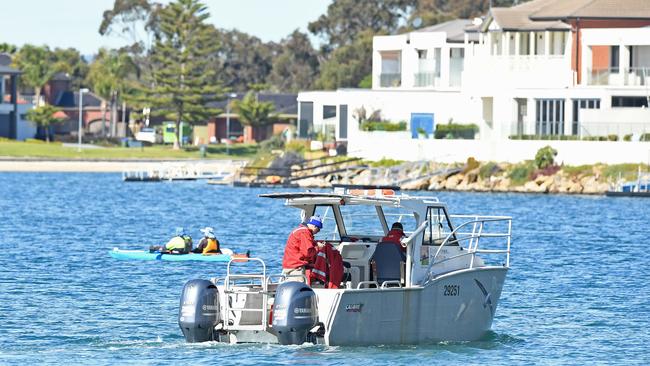EPA clears West Lakes water for recreational use
West Lakes rowers, swimmers and boaties can breathe a sigh of relief as EPA test results confirm the lake is safe for recreational use. But fishers will have to wait a little longer.
SA News
Don't miss out on the headlines from SA News. Followed categories will be added to My News.
Tests on water samples from West Lakes have confirmed the lake is safe for recreational use.
The Environmental Protection Agency took water samples in late August after elevated concentrations of PFAS (per- and poly-fluroalkyl substances) were found in soil, groundwater and sewage sludge samples collected at and in the vicinity of the former Port Adelaide wastewater treatment plant.
Sewage sludge from the site used in the West Lakes development is likely to also contain PFAS.

EPA director of regulation Peter Dolan said that laboratory analysis showed there were no detectable concentrations of PFAS in the water samples collected from West Lakes at any of the sampling locations.
Traces of PFAS were found in stormwater, which feeds into the lake system, but at levels well below the national standard for recreational use.
“The results in stormwater are not a surprise, given the widespread historical use of PFAS,” Mr Dolan said.
“These results confirm that it is safe for swimmers and rowers to use the lake.”
Fish samples collected from the lake are also being analysed and those results are not expected to be available for several more weeks.
PFAS is an emerging contaminant that accumulates in the human body with unknown health effects.
Lake water was assessed using the NHMRC guidelines for managing risk in recreational water.
The EPA sampled six locations in the lake, with a focus on more popular recreational areas and two of the main stormwater drains that enter into the lake.
Water samples were stored at 4C and transported overnight to the National Measurement Institute in Sydney, a nationally accredited laboratory with expertise in PFAS testing. They can measure 33 different chemicals in the PFAS group.
One of the two stormwater drains did contain detectable PFAS (0.023 µg/L PFOS and 0.015 µg/L PFHxS) at levels well below water quality guidelines.
A copy of the test results can be found here

